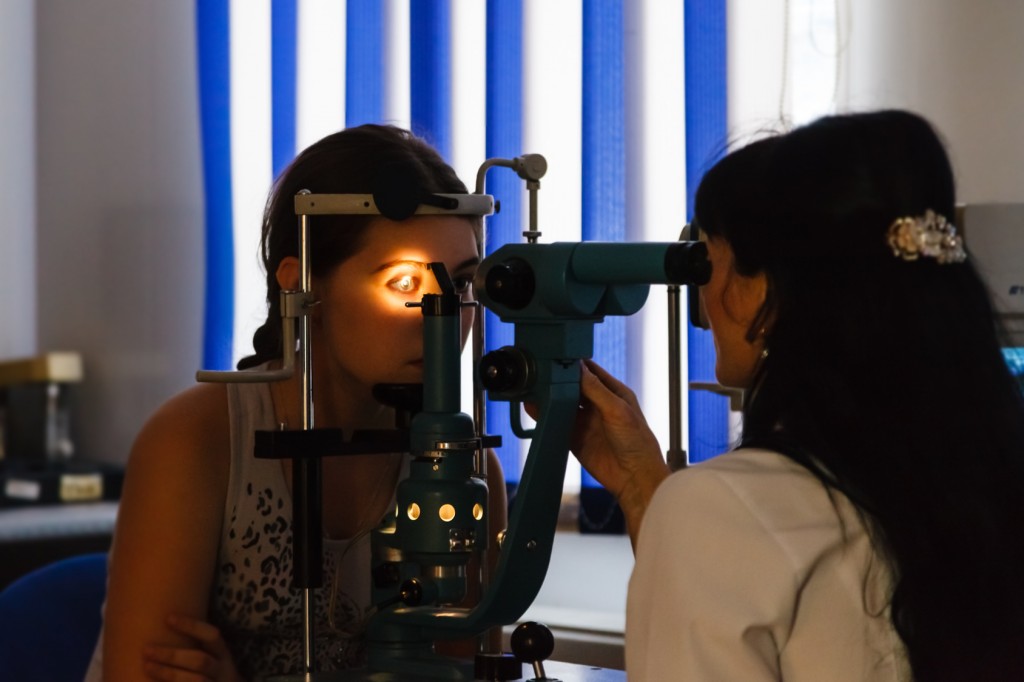Melanoma is a particular kind of cancer — one that develops in the cells that produce the pigment which colors your skin, hair, and eyes. It most commonly develops in the skin, but in rare instances, it can develop in the eyes, as well.
The form of melanoma that develops in the eyes, known as ocular melanoma, is the most common cancer of the eye in adults. According to the Ocular Melanoma Foundation, it is diagnosed in approximately 2,500 adults every year in the United States. People with light skin and eye colors, and people over 50 years of age are at the greatest risk, but all races or ages can develop ocular melanoma.
As with many other cancers, ocular melanoma, or OM, is malignant, meaning if left untreated it can metastasize, or spread to other parts of the body. Once this happens, OM becomes much more difficult to control, and is often fatal.
As with many cancers, OM is not well-understood. It can grow in the uveal tract, which comprises three areas of the eye: the iris, the ciliary body, and the choroid uvea. The iris is the colored part of the eye. It is the least likely to be the origin of OM, but often gives the best prognosis. The choroid uvea is an area filled with blood vessels between the retina and the white part of the eye, and the part of the eye where melanoma is more likely to form. The ciliary body, which produces the aqueous humor inside the eye, is less likely, but OM can occur in any of these parts, or sometimes more than one simultaneously.
The Signs of Ocular Melanoma
Unfortunately, sometimes OM can develop without any overt symptoms. The signs you should watch for include:
- Loss of peripheral vision, or loss of vision in the center of the eye
- Blurred or fuzzy vision in one eye
- Seeing specks floating in your field of vision
- The sensation of flashing lights
- A change in the shape of your pupil (the dark circle in the center) of your eye
- A dark spot in the iris (colored part) of your eye that seems to be increasing in size
- Glaucoma (high pressure inside the eye). A painful, red eye, often with blurred vision can be a sign not only of glaucoma, but of OM.
- The first sign is sometimes the development of cancer in other parts of the body, like the bones, lungs, or liver.
The often hidden nature of OM is yet another reason to get a comprehensive eye exam every year just to be certain everything is okay with your eyes. Of course, if you have any of the above symptoms, you should see a doctor at any point of the year. Sudden changes in vision are always a sign for a visit to a medical professional.
On certain occasions, your doctor may not see the need to treat a small eye melanoma immediately, if it doesn’t seem to be growing. Once it is clearly growing, or begins to cause complications, it may be time to begin treatment.
Treatments for Ocular Melanoma
As with other forms of cancer, there are a number of methods used to treat OM, some of them fairly specific to this type of melanoma.
Surgery is often used to remove small melanomas, just as with other types of tumors. The melanoma is cut away, along with a small bit of healthy tissue, in the hope the tumor will not grow back. When the melanoma is larger or is causing the patient great pain, sometimes the entire eye has to be removed, and eventually replaced with a prosthetic eye, which is colored to look like the original eye.
Radiation therapy uses proton rays or gamma rays to kill cancer cells. This is best used for smaller or medium sized melanomas. Often, the radiation is administered by putting a radioactive object directly over the tumor itself, secured by temporary stitches. This object is held over the eye for several days before being removed.
Radiation can also be administered through actual beams directly into the eye, over a process that usually takes several days.
Lasers are often used to cut even more finely than a scalpel, and can sometimes be used to kill tumors. A special kind of infrared laser is sometimes used along with radiation therapy to treat OM.
Cryotherapy, or treatment using extreme cold, is a rare way to treat small eye melanomas.
As with any form of cancer, the best course is always to find it and treat it as soon as possible. Get regular checkups, both with your eye doctor and with your general doctor to make sure your eyes, and the rest of you, are as healthy as they can possibly be.
**
Laura O’Donnell writes smart content on behalf of the eye doctors at EyeCare 20/20. As an avid writer and learner, she loves to use her skills for engaging others in important topics in creative and effective ways. When she is not working, she loves meeting new people, traveling, and bringing her Pinterest dreams to life. Find her on LinkedIn.
